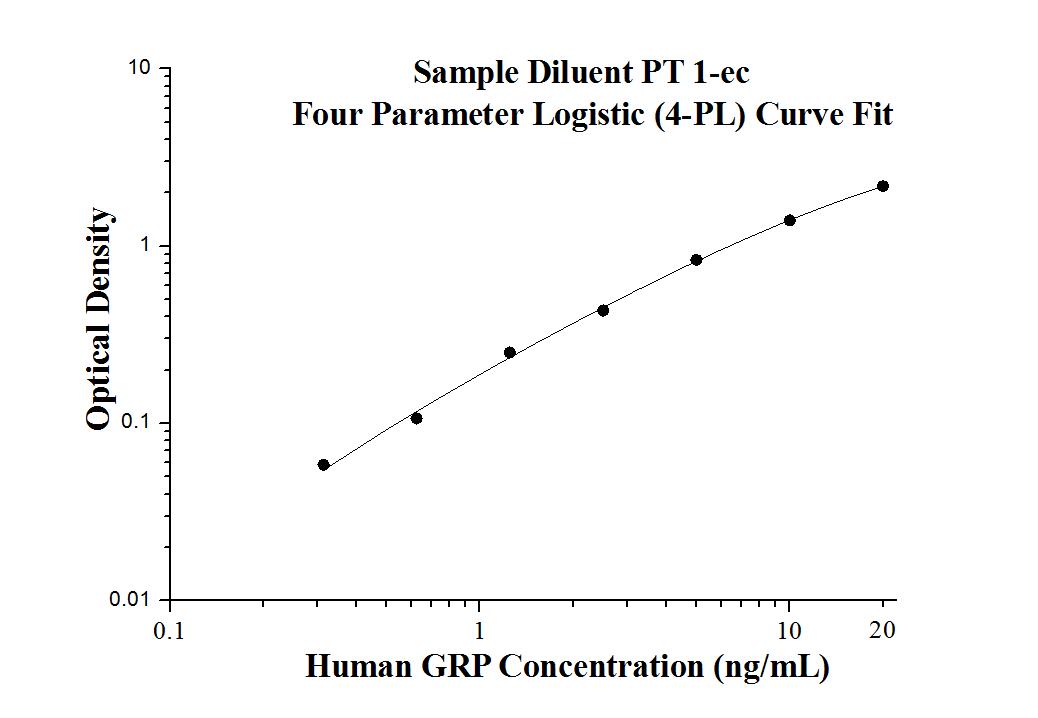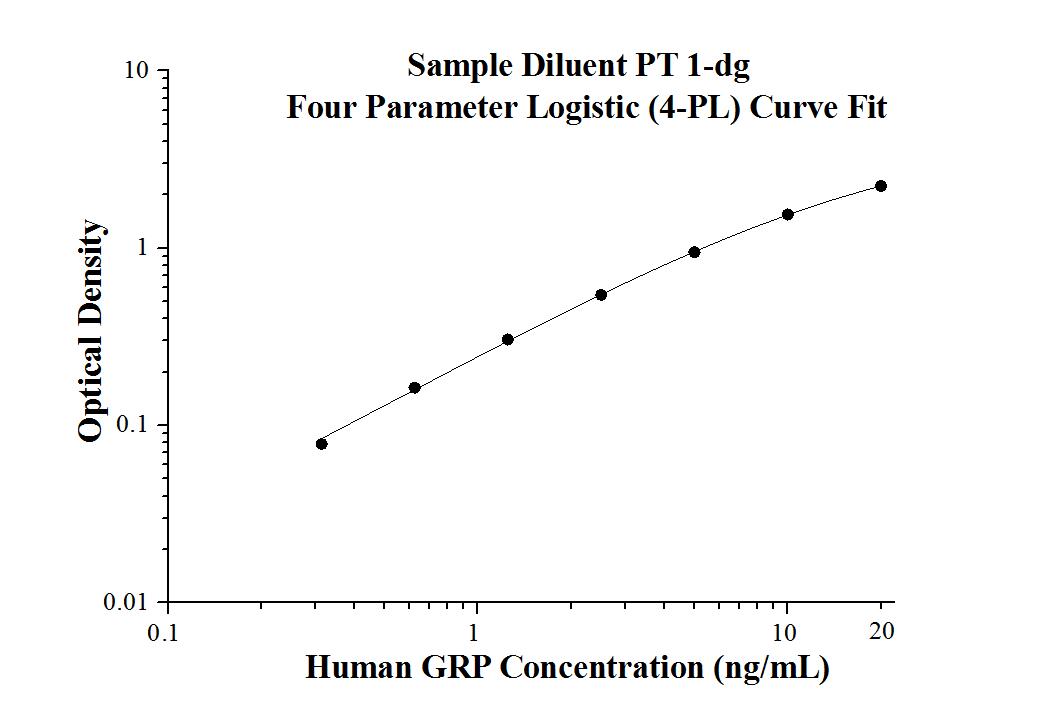Human GRP ELISA Kit
Sensitivity
0.03 ng/mL
Range
0.313-20 ng/mL
Reactivity
Human
Cat no : KE00070
Synonyms
BN, gastrin releasing peptide, GRP, GRP 10, preproGRP, proGRP
Validation Data Gallery
Product Information
KE00070 is a solid phase sandwich Enzyme Linked-Immuno-Sorbent Assay (Sandwich ELISA). The GRP ELISA kit is to be used to detect and quantify protein levels of endogenous GRP. The assay recognizes human GRP. An antibody specific for GRP has been pre-coated onto the microwells. The GRP protein in samples is captured by the coated antibody after incubation. Following extensive washing, another antibody specific for GRP is added to detect the captured GRP protein. For signal development, horseradish peroxidase (HRP)-conjugated antibody is added, followed by Tetramethyl-benzidine (TMB) reagent. Solution containing sulfuric acid is used to stop color development and the color intensity which is proportional to the quantity of bound protein is measurable at 450 nm with the correction wavelength set at 630 nm.
| Product name | Human GRP ELISA Kit |
| Tests | 1 X 96 well plate |
| Sample type | Serum, Plasma, Cell culture supernatants |
| Assay type | Sandwich |
| Sensitivity | 0.03 ng/mL |
| Range | 0.313-20 ng/mL |
| Reactivity | Human |
| Tested applications | Sandwich ELISA |
| Gene ID (NCBI) | 2922 |
Recovery
| Sample Type | Average | Range |
|---|---|---|
| Human plasma | 108% | 86%-128% |
| Cell culture supernatants | 91% | 77%-103% |
IntraAssay
| Sample | n | mean ( ng/mL) | SD | CV% |
|---|---|---|---|---|
| 1 | 20 | 13.3 | 0.90 | 6.9 |
| 2 | 20 | 4.6 | 0.20 | 4.6 |
| 3 | 20 | 1.1 | 0.06 | 5.3 |
InterAssay
| Sample | n | mean ( ng/mL) | SD | CV% |
|---|---|---|---|---|
| 1 | 24 | 13.8 | 0.70 | 4.9 |
| 2 | 24 | 3.4 | 0.30 | 7.8 |
| 3 | 24 | 0.6 | 0.05 | 8.8 |
Background Information
Gastrin-releasing peptide, also known as GRP, is normally formed by mucosal cells in the gastric antrum and by the D cells of the pancreatic islets, and its main function is to stimulate secretion of HCl by the gastric mucosa. HCl, in turn, inhibits gastrin formation. Its 148-amino acid preproprotein, following cleavage of a signal peptide, is further processed to produce either the 27-amino acid gastrin-releasing peptide or the 10-amino acid neuromedin C. These smaller peptides regulate numerous functions of the gastrointestinal and central nervous systems, including release of gastrointestinal hormones, smooth muscle cell contraction, and epithelial cell proliferation.These peptides are also likely to play a role in human cancers of the lung, colon, stomach, pancreas, breast, and prostate.
Properties
| Storage Instructions | All the reagents are stored at 2-8℃ for 6 months or -20℃ for 12 months. Refer to the protocol for further storage instructions. |
| Synonyms | BN, gastrin releasing peptide, GRP, GRP 10, preproGRP, proGRP |


